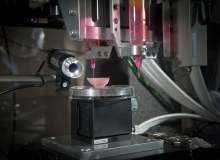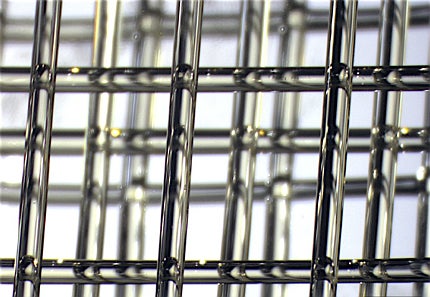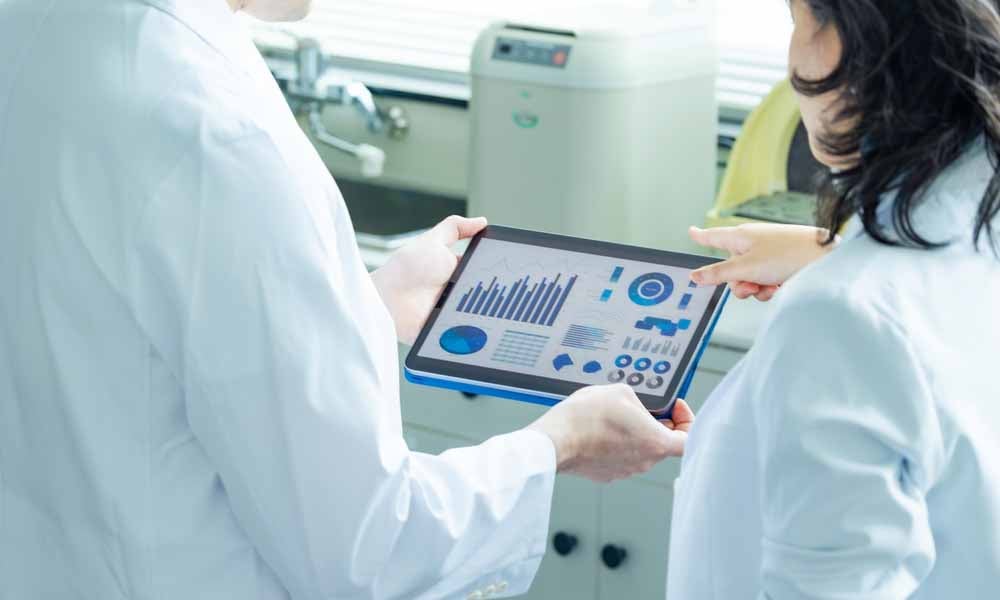

3D printing, the process by which objects can be printed in myriad intricate forms using digital models, has now gained a firm foothold in the minds of designers, manufacturers and futurists working in a host of industries. Even in the complex world of medicine, the technology has been finding meaningful applications across a range of fields, including orthopaedics, prosthetics and dentistry.
The rise of additive manufacturing is being highlighted at ‘3D: printing the future’, a new exhibition that opened to the public at London’s Science Museum on 9 October. The medical section of the show pointed out that around 5.5 million patients have been treated using 3D parts, from prosthetic limbs to 3D-printed titanium jaw implants. For hearing aids, meanwhile, 3D printing is practically standard issue already, with more than ten million printed hearing aids reportedly being used around the world.
If further evidence that the technology is no passing fad were needed, a new report by Transparency Market Research predicts that the medical 3D printing market will grow in value from $354m last year to $965m in 2019, as good an indication as any that healthcare investment into 3D printing is comfortably being sustained and expanded.
As researchers’ understanding of the technology improves, increasingly subtle applications are being pioneered to work with the body’s natural healing mechanisms. Professor John A. Hunt of the University of Liverpool’s UK Centre for Tissue Engineering, who was present at a preview of the Science Museum exhibition, notes that modern 3D printing techniques are able to create porous structures, allowing creation of ‘scaffolds’ that encourage shattered bones to re-knit correctly.
See Also:
"3D printing is being used, certainly in orthopaedic surgery, to print these porous materials for bone stabilisation," he says. "We already know that titanium is a fantastic material for orthopaedic implants, but if you start to create porous [implants] through 3D printing, the patient’s bone moves into this and the area stabilises very rapidly, and permanently. This is a regenerative repair that is long-lived."
How well do you really know your competitors?
Access the most comprehensive Company Profiles on the market, powered by GlobalData. Save hours of research. Gain competitive edge.

Thank you!
Your download email will arrive shortly
Not ready to buy yet? Download a free sample
We are confident about the unique quality of our Company Profiles. However, we want you to make the most beneficial decision for your business, so we offer a free sample that you can download by submitting the below form
By GlobalDataBioprinting and regenerative medicine
If today’s medical 3D printing techniques hint at a greater potential for regenerative medicine, the next wave of the technology is looking to fully capitalise on that prospect. New ‘bioprinting’ techniques allow the printing of cell-loaded replicas of human tissues, usually held together in liquid or hydrogel form, with which developers are exploring a new frontier of regenerative healing.
The attention-grabbing endpoint of bioprinting could be print-on-demand organs to banish transplant waiting lists forever. Of course, decades will pass before bioprinters are able to replicate the complex functions of human organs for safe implantation in patients, but today’s scientists are beginning the journey towards that destination by introducing cells to the printing process, and ensuring they can survive it. The field’s development is increasingly linked to stem cell research, as the pluripotency of embryonic stem cells could create the varied supply needed for both research and eventual use in clinics.
"The really exciting bits are things like the joints, where you move from bone to cartilage and your body seamlessly changes tissue type as you go from the bone to the articulating surface," says Hunt, who created a 3D-printed bladder for the Science Museum exhibition. "It’s quite hard to manufacture a material for that, but with 3D printing, you can create that changing structure through the whole component, so you can then start to guide things like stem cells to be bone in one part and cartilage in another part.
"So you’ve then got this means to create a material that’s right for the different types of cells you want to populate the space. Once you get that kind of system going, where you can have two different types of cell, or one type of cell – for example the stem cell – doing two different things in a space, then you can start to think about organs, which have multiple different cells in different space."
Bioprinting developments
Labs around the world are working to push forward the science of bioprinting. Cartilage has been identified as a good starting point, given the relatively small nutritional requirements of the tissue’s chondrocyte cells. The survivability of these cells helps sidestep one of the trickiest challenges in the bioprinting process, which is to keep printed cells alive and nourished, normally accomplished by their close proximity to the body’s network of capillaries (although projects like those at University of California, San Diego and the University of Pennsylvania are already working on 3D-printed vascular systems to address this issue).
"Printing a heart or a whole bladder is glamorous and exciting," Dr. Darryl D’Lima, whose lab at the Scripps Clinic in San Diego, US is working on bioprinted cartilage, told the New York Times in August 2013. "But cartilage might be the low-hanging fruit to get 3D printing into the clinic."
Nevertheless, D’Lima’s ultimate goal for bioprinted cartilage is hardly lacking in ambition. The team eventually wants to create a 3D printing system – possibly in conjunction with a robotic surgical arm – that can print cartilage directly in the body to repair or replace damaged joint tissue.
Beyond cartilage, progress is also being made on the bioprinting of more complex living tissues. California-based Organovo, which has emerged as a bioprinting leader and recently secured research funding from regenerative medicine charity Methuselah Foundation, presented in April the world’s first 3D bioprinted human liver tissue using its NovoGen bioprinting platform. The printed tissue incorporates multiple cell types, the patterns of which bear close resemblance to the natural architecture of liver tissue.
While breakthroughs like the bioprinted liver tissue are no indication that made-to-order organs are around the corner, a more immediate application for these living tissues – including Organovo’s liver tissue – is to test the efficacy or toxicity of experimental drugs and treatments.
Similarly, the so-called ‘body on a chip’ project at the Wake Forest Institute for Regenerative Medicine in North Carolina, US, is using bioprinting methods to create separate cell structures that replicate major organ functions, which are then linked with artificial blood circulation. This creates a micro version of the body’s core systems, small enough to fit on to a microchip, and the circulation can be used to distribute vaccines or other agents to test reactions.
The future: economic and medical regeneration
As 3D printing and bioprinting continues to spawn new medical applications, there is also the opportunity to create new areas of high-tech industry – economic as well as medical regeneration.
"This is low-volume, high-value manufacturing; it’s exactly what the UK wants to develop," says Hunt. "It’s very technical, very involved, cutting-edge research, and the UK manufacturing industry, in all its wonderful and innovative capacity, can pick this up. We engage at a very early stage with small to medium size enterprises and the large enterprises in the UK to take these [projects] forward. It’s very important to engage and invent the process with them, such that it can be cost-effective and therefore delivered as soon as possible into the healthcare sector."
Although still in its early stages of development, bioprinting holds the promise to open up a brave new world of therapeutic innovation. Once the more advanced bioprinting template is set and accepted within the medical establishment (safety and regulatory process are clearly obstacles yet to be overcome in many areas), the possibilities are practically endless.
"You can just explore the boundaries of your imagination with 3D printing," Hunt enthuses. "As soon as you have that in the context of having materials that can be implanted into the body safely, you just need to match those with the tissues you want to create, with the stem cells you need to put in that space, and then you really do have an exciting, multivariant value proposition for health through regenerative medicine in the future. The boundaries don’t exist anymore."
Related content
Bioelectronic medicine – speaking the body’s electrical language
Medicines that speak the electrical language of the body could become a reality sooner rather than later, thanks to an ambitious plan launched by pharma giant GSK.
Developing personalised medicines – Q&A with Penn State University’s Dr Broach
Personalised medicine is one of the biggest medical advancements for decades, but the revolution is only just beginning.





